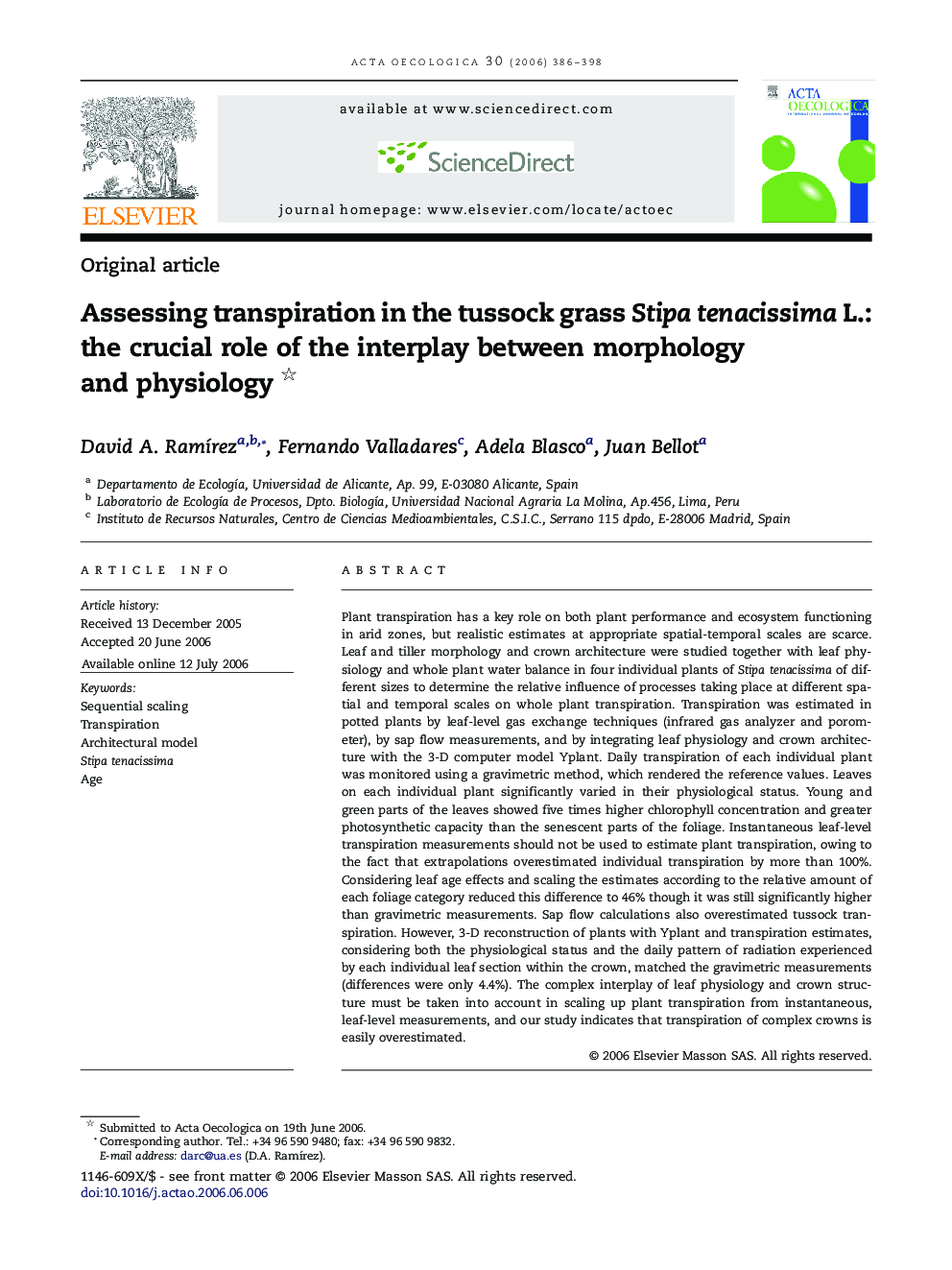| Article ID | Journal | Published Year | Pages | File Type |
|---|---|---|---|---|
| 4381716 | Acta Oecologica | 2006 | 13 Pages |
Abstract
Plant transpiration has a key role on both plant performance and ecosystem functioning in arid zones, but realistic estimates at appropriate spatial-temporal scales are scarce. Leaf and tiller morphology and crown architecture were studied together with leaf physiology and whole plant water balance in four individual plants of Stipa tenacissima of different sizes to determine the relative influence of processes taking place at different spatial and temporal scales on whole plant transpiration. Transpiration was estimated in potted plants by leaf-level gas exchange techniques (infrared gas analyzer and porometer), by sap flow measurements, and by integrating leaf physiology and crown architecture with the 3-D computer model Yplant. Daily transpiration of each individual plant was monitored using a gravimetric method, which rendered the reference values. Leaves on each individual plant significantly varied in their physiological status. Young and green parts of the leaves showed five times higher chlorophyll concentration and greater photosynthetic capacity than the senescent parts of the foliage. Instantaneous leaf-level transpiration measurements should not be used to estimate plant transpiration, owing to the fact that extrapolations overestimated individual transpiration by more than 100%. Considering leaf age effects and scaling the estimates according to the relative amount of each foliage category reduced this difference to 46% though it was still significantly higher than gravimetric measurements. Sap flow calculations also overestimated tussock transpiration. However, 3-D reconstruction of plants with Yplant and transpiration estimates, considering both the physiological status and the daily pattern of radiation experienced by each individual leaf section within the crown, matched the gravimetric measurements (differences were only 4.4%). The complex interplay of leaf physiology and crown structure must be taken into account in scaling up plant transpiration from instantaneous, leaf-level measurements, and our study indicates that transpiration of complex crowns is easily overestimated.
Related Topics
Life Sciences
Agricultural and Biological Sciences
Ecology, Evolution, Behavior and Systematics
Authors
David A. RamÃrez, Fernando Valladares, Adela Blasco, Juan Bellot,
